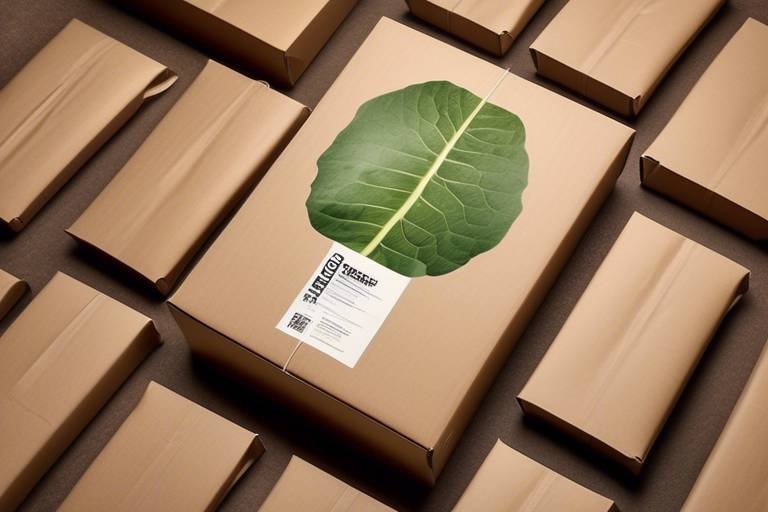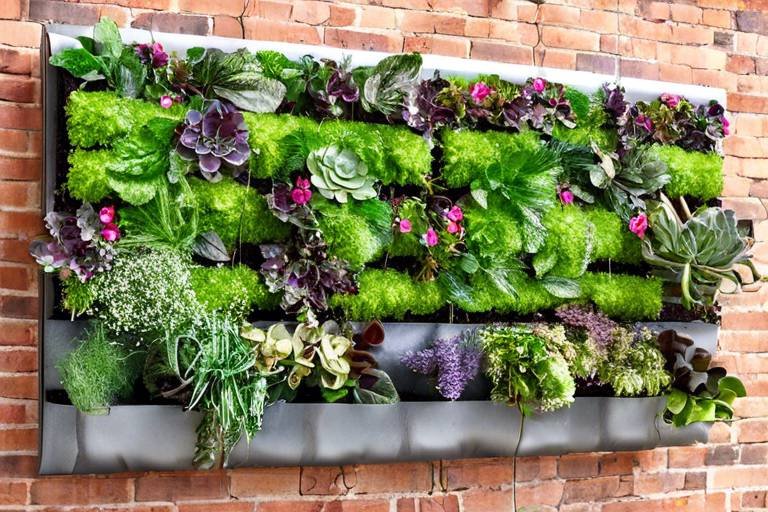10 Tips for a Sustainable Lifestyle Change
Are you ready to embark on a journey towards a more sustainable lifestyle? Making small changes in your daily habits can have a significant impact on the environment and your well-being. Let's explore ten practical tips to help you transition to a greener way of living.
First and foremost, evaluate your current habits. Take a moment to reflect on your daily routines and consumption patterns. Are there areas where you can reduce waste or make more eco-friendly choices? Identifying these opportunities is the first step towards a sustainable lifestyle.
One of the most impactful changes you can make is to reduce single-use plastics. Opt for reusable alternatives such as water bottles, shopping bags, and food containers. By minimizing plastic waste, you can contribute to a cleaner environment and healthier oceans.
Embracing plant-based eating is not only beneficial for your health but also for the planet. By incorporating more fruits, vegetables, and whole grains into your diet, you can reduce your carbon footprint and support sustainable agriculture practices.
To conserve energy at home, consider switching to LED bulbs, unplugging electronics when not in use, and adjusting your thermostat to save energy. These simple practices can lower your utility bills and reduce greenhouse gas emissions.
Supporting sustainable brands is another way to promote eco-friendly practices. Choose products from companies that prioritize ethical sourcing, fair labor conditions, and environmentally conscious manufacturing processes. Your purchasing decisions can drive positive change in the industry.
Cultivating a minimalist mindset can also contribute to a more sustainable lifestyle. Declutter your living space, buy only what you truly need, and focus on collecting experiences rather than material possessions. Simplifying your life can lead to greater fulfillment and less environmental impact.
When it comes to transportation, opt for eco-friendly options such as walking, biking, carpooling, or using public transit whenever possible. By reducing your reliance on fossil fuels, you can help decrease air pollution and combat climate change.
Practice water conservation by fixing leaks, installing water-efficient fixtures, and being mindful of your water usage. Every drop counts, and by reducing water waste, you can contribute to the preservation of this precious resource for future generations.
Get involved in community initiatives that promote sustainability, such as local clean-up efforts, community gardens, or environmental education programs. By engaging with like-minded individuals, you can make a meaningful impact in your neighborhood and inspire others to join the movement towards a greener future.
By incorporating these ten tips into your daily life, you can take meaningful steps towards a more sustainable lifestyle. Remember, every small action counts towards creating a brighter and cleaner future for our planet.

Evaluate Your Current Habits
When embarking on a journey towards a more sustainable lifestyle, the first step is to . Take a moment to reflect on your daily routines and consumption patterns. Are there areas where you could make more eco-friendly choices? Perhaps you notice that you use a lot of single-use plastics, leave lights on when not needed, or waste water unknowingly. By understanding your current habits, you can pinpoint areas for improvement and set realistic goals for change.

Reduce Single-Use Plastics
Reducing single-use plastics is a crucial step towards a more sustainable lifestyle. By minimizing our reliance on disposable plastic items, we can significantly decrease environmental pollution and protect marine life. One effective way to achieve this is by replacing single-use plastic products with reusable alternatives. Investing in a durable water bottle, eco-friendly shopping bags, and food containers can greatly reduce the amount of plastic waste generated on a daily basis.
Additionally, raising awareness about the negative impacts of single-use plastics can inspire others to join the movement towards a plastic-free future. Educating friends, family, and colleagues about the importance of reducing plastic consumption can lead to collective action and positive change within communities. Small actions, such as refusing plastic straws or bringing your own coffee cup, can make a big difference in reducing plastic pollution.
Furthermore, supporting businesses that offer sustainable packaging options and eco-friendly alternatives can drive market demand for plastic-free products. By choosing to purchase from companies that prioritize environmental responsibility, consumers can influence corporate practices and encourage the transition to more sustainable packaging solutions.

Embrace Plant-Based Eating
Embracing plant-based eating is not just a dietary choice but a lifestyle that can have a significant impact on both your health and the environment. By shifting towards a plant-based diet, you are not only reducing your carbon footprint but also promoting animal welfare and improving your overall well-being.
Plant-based eating involves consuming a variety of fruits, vegetables, whole grains, legumes, nuts, and seeds while minimizing or eliminating animal products such as meat, dairy, and eggs. This dietary shift can lead to lower risks of chronic diseases, weight management, and increased energy levels due to the abundance of vitamins, minerals, and antioxidants found in plant-based foods.
Moreover, plant-based eating is inherently sustainable as it requires fewer resources like water and land compared to animal agriculture. By choosing plant-based options, you are supporting a more environmentally friendly food system that helps reduce deforestation, greenhouse gas emissions, and water pollution.
Transitioning to a plant-based diet may seem daunting at first, but it can be a gradual process. Start by incorporating more plant-based meals into your weekly routine, experimenting with new recipes, and exploring alternative protein sources like tofu, tempeh, and legumes. By making small changes over time, you can discover a world of delicious and nutritious plant-based foods that nourish your body and the planet.
Remember, plant-based eating is not about deprivation but rather about abundance and creativity. There are endless possibilities when it comes to plant-based cuisine, from vibrant salads and hearty soups to flavorful stir-fries and indulgent desserts. By embracing plant-based eating, you are not only making a positive impact on your health and the environment but also expanding your culinary horizons in exciting ways.

Conserve Energy at Home
When it comes to creating a sustainable lifestyle, conserving energy at home plays a crucial role in reducing your carbon footprint and promoting environmental well-being. By implementing simple yet effective energy-saving practices, you can contribute to a greener future while also saving on utility costs.
One of the most impactful ways to conserve energy at home is by switching to LED bulbs. These energy-efficient light sources consume significantly less electricity than traditional incandescent bulbs, helping you reduce your overall energy consumption. Additionally, LED bulbs have a longer lifespan, reducing the frequency of replacements and further decreasing waste.
Another essential step in energy conservation is unplugging electronics when not in use. Many devices continue to draw power even when turned off, contributing to "phantom" energy consumption. By unplugging chargers, appliances, and electronics when they are not actively being used, you can prevent unnecessary energy waste and lower your electricity bill.
Adjusting your thermostat to optimize heating and cooling is another effective way to conserve energy at home. During the winter months, lowering your thermostat by just a few degrees can result in significant energy savings. In the summer, using fans or opening windows for natural ventilation can reduce the need for air conditioning, further lowering your energy consumption.
Investing in energy-efficient appliances can also make a substantial difference in your household's energy usage. Look for appliances with the ENERGY STAR label, indicating that they meet high standards for energy efficiency. From refrigerators to washing machines, choosing energy-efficient models can help you save energy and reduce your environmental impact.
Creating a home energy audit can provide valuable insights into your energy usage patterns and highlight areas where improvements can be made. By identifying energy inefficiencies, such as drafty windows or poor insulation, you can take targeted steps to enhance your home's energy efficiency and reduce wasted energy.
By adopting these energy-saving practices and making conscious choices to reduce your household's energy consumption, you can play a significant role in promoting sustainability and environmental stewardship right from the comfort of your own home.

Support Sustainable Brands
Supporting sustainable brands is a crucial step towards creating a more eco-conscious lifestyle. By choosing products from companies that prioritize ethical sourcing, fair labor practices, and eco-friendly manufacturing processes, you are actively contributing to a greener future. These brands often focus on using renewable resources, reducing waste, and minimizing their carbon footprint throughout the production process.
When you opt for sustainable brands, you are not only investing in high-quality products but also supporting a business model that values environmental stewardship. By making informed purchasing decisions, you can align your values with your consumption habits and positively impact the planet. Additionally, sustainable brands often prioritize transparency, providing consumers with insights into their supply chain and production methods.
Many sustainable brands also engage in initiatives that give back to the community or support environmental causes. By purchasing from these companies, you are indirectly contributing to these efforts and helping create a more sustainable future for all. Supporting sustainable brands is not just about the products you buy; it's about endorsing a mindset that values sustainability and responsible practices in all aspects of life.

Cultivate a Minimalist Mindset
Living with a minimalist mindset is not just about decluttering your physical space; it's a holistic approach to simplifying your life and focusing on what truly matters. By embracing minimalism, you can reduce your environmental impact, save money, and experience a sense of freedom and clarity. Imagine your life as a garden - by removing the weeds of excess stuff, you allow the flowers of intentionality and purpose to bloom.

Opt for Eco-Friendly Transportation
When it comes to making sustainable lifestyle changes, opting for eco-friendly transportation is a crucial step in reducing your carbon footprint and contributing to a healthier environment. By choosing alternative modes of transportation that are kinder to the planet, you can make a significant impact on the overall sustainability of your lifestyle.
One of the most effective ways to embrace eco-friendly transportation is by incorporating walking and biking into your daily routine. Not only does walking or biking reduce greenhouse gas emissions and air pollution, but it also promotes physical activity and improves your overall well-being. Consider walking or biking for short distances instead of relying on motor vehicles, and experience the benefits of both a healthier lifestyle and a cleaner environment.
If walking or biking is not always feasible, carpooling or using public transportation are excellent alternatives to reduce your carbon footprint. Carpooling with friends, family, or coworkers not only helps lower emissions but also saves money on fuel and reduces traffic congestion. Public transportation, such as buses or trains, is a sustainable option that can significantly decrease the number of vehicles on the road, leading to less pollution and a more efficient transportation system.
Furthermore, if you own a vehicle, consider switching to a more eco-friendly option, such as a hybrid or electric car. These vehicles produce fewer emissions and consume less fuel, making them a greener choice for transportation. Additionally, maintaining your vehicle properly by regularly servicing it and keeping tires properly inflated can improve fuel efficiency and reduce harmful emissions.
When it comes to long-distance travel, consider using alternative modes of transportation like trains or buses instead of flying. Air travel is a significant contributor to carbon emissions, so opting for more sustainable transportation options whenever possible can help minimize your environmental impact.
By making conscious choices about how you get from place to place, you can play a vital role in creating a more sustainable future. Whether it's walking, biking, carpooling, using public transportation, or investing in eco-friendly vehicles, every decision you make in favor of eco-friendly transportation is a step towards a greener, healthier planet.

Practice Water Conservation
Water conservation is a crucial aspect of sustainable living that can significantly reduce your environmental impact. By adopting mindful practices and making simple changes in your daily routine, you can contribute to the preservation of this precious resource. One effective way to practice water conservation is by fixing any leaks in your home promptly. A dripping faucet or a running toilet can waste a significant amount of water over time, so ensuring that your plumbing is in good condition is essential.
Additionally, using efficient fixtures such as low-flow showerheads and faucets can help minimize water wastage without compromising on functionality. These fixtures are designed to reduce water usage while maintaining adequate water pressure, allowing you to conserve water without sacrificing comfort. By incorporating these eco-friendly solutions into your home, you can make a positive impact on both the environment and your water bill.
Another practical tip for water conservation is to be mindful of your consumption habits. Simple actions like turning off the tap while brushing your teeth, taking shorter showers, and only running the dishwasher and washing machine with full loads can all contribute to saving water. These small adjustments may seem insignificant individually, but collectively, they can lead to substantial water savings over time.
Furthermore, considering the water-intensive nature of certain activities, such as watering the garden or washing the car, it's essential to find efficient ways to carry out these tasks. Using a watering can instead of a hose for gardening or visiting a car wash that recycles water can help minimize water usage while still meeting your needs. By being conscious of how you use water in your daily life, you can play a part in conserving this vital resource for future generations.

Engage in Community Initiatives
Engaging in community initiatives is a powerful way to contribute to a more sustainable world. By actively participating in local projects and initiatives, you can make a tangible difference in your neighborhood and beyond. Community involvement fosters a sense of belonging and connection, uniting individuals with a shared goal of creating a greener and healthier environment for all.
One impactful way to engage in community initiatives is by joining local sustainability projects. These initiatives often focus on promoting eco-friendly practices, such as recycling programs, energy conservation efforts, and community gardens. By volunteering your time and skills, you can play a direct role in implementing positive changes that benefit both the environment and the community as a whole.
Another avenue for involvement is through community gardens, which not only promote sustainable food production but also foster a sense of community spirit. By participating in community gardening projects, you can learn about organic farming practices, connect with like-minded individuals, and enjoy the fruits of your labor while reducing your carbon footprint.
Environmental clean-up efforts are also vital community initiatives that help combat pollution and preserve natural habitats. By participating in clean-up events, such as beach clean-ups or park restoration projects, you can directly contribute to the health and beauty of your local environment. These activities not only benefit wildlife and ecosystems but also create a cleaner and more enjoyable space for everyone to enjoy.
Moreover, engaging in community initiatives provides an opportunity to educate and inspire others to take action towards sustainability. By leading by example and sharing your knowledge and experiences, you can motivate others to adopt eco-friendly practices and become active participants in creating a more sustainable future for all.
Frequently Asked Questions
- What are the benefits of transitioning to a sustainable lifestyle?
Transitioning to a sustainable lifestyle comes with numerous benefits, including reducing your environmental impact, promoting a healthier planet for future generations, and improving your own well-being. By making eco-friendly choices, you contribute to the preservation of natural resources and wildlife, while also fostering a sense of community and responsibility towards the Earth.
- How can I start reducing single-use plastics in my daily life?
You can start by replacing single-use plastic items with reusable alternatives such as stainless steel water bottles, cloth shopping bags, and glass food containers. By making these simple switches, you can significantly decrease the amount of plastic waste ending up in landfills and oceans, ultimately helping to protect marine life and ecosystems.
- Why is supporting sustainable brands important?
Supporting sustainable brands is crucial because it encourages responsible business practices, ethical sourcing of materials, fair treatment of workers, and eco-friendly production methods. By choosing products from companies committed to sustainability, you contribute to a greener economy and send a powerful message to the industry that environmental stewardship is a priority.
- How can I get involved in community sustainability initiatives?
You can get involved in community sustainability initiatives by joining local environmental organizations, participating in neighborhood clean-up events, volunteering at community gardens, or attending educational workshops on sustainable living. By engaging with like-minded individuals and taking collective action, you can make a tangible difference in your community and inspire others to follow suit.



















